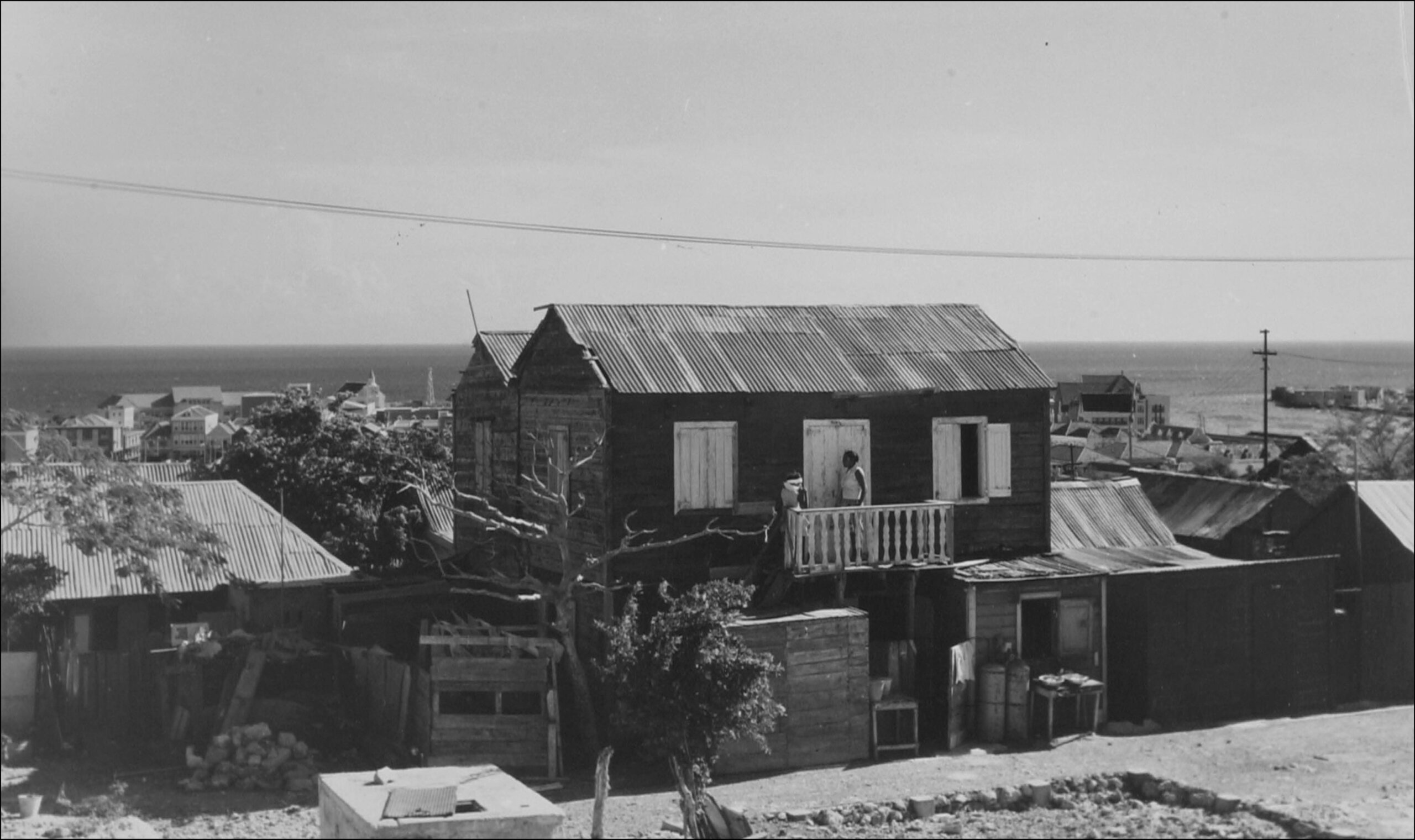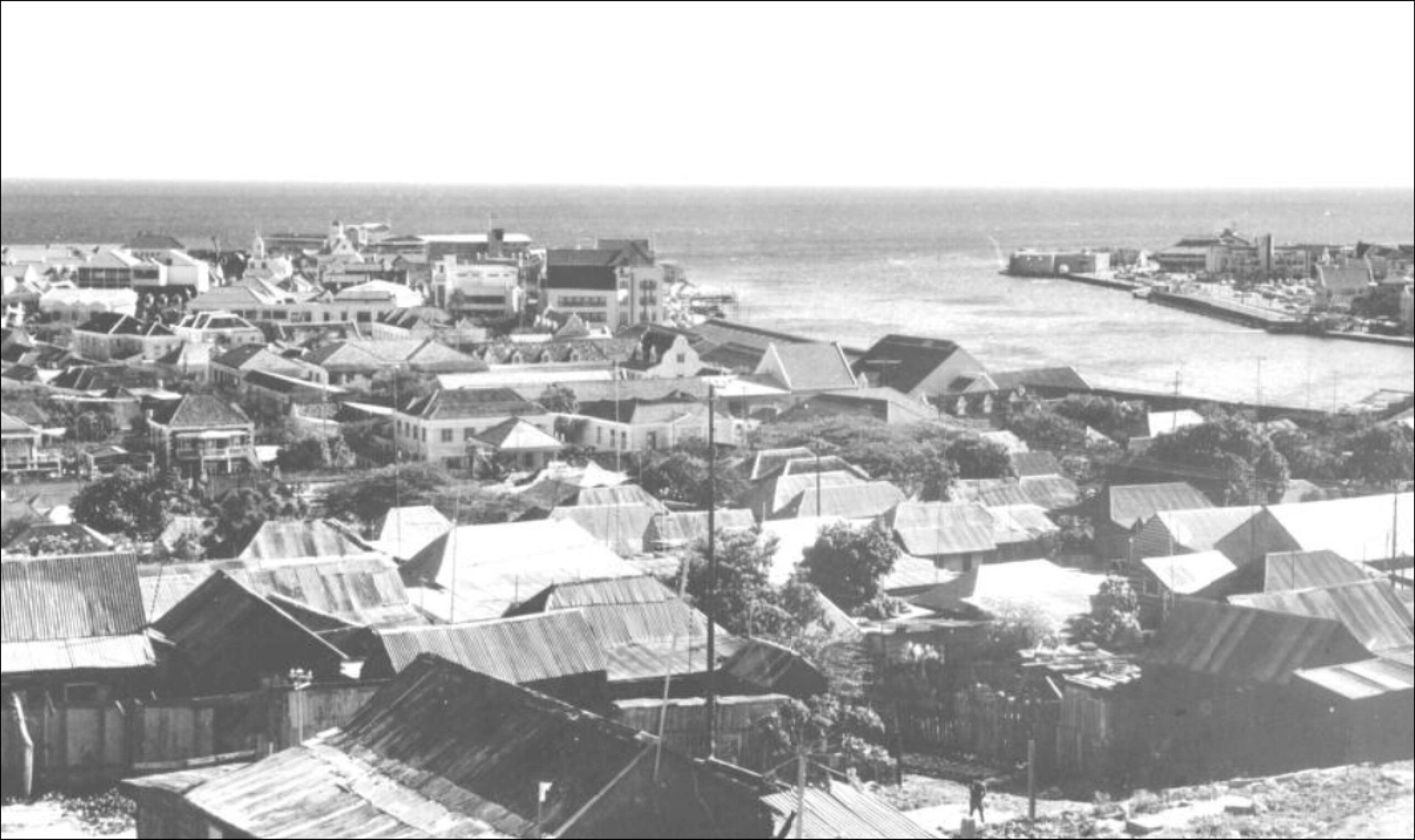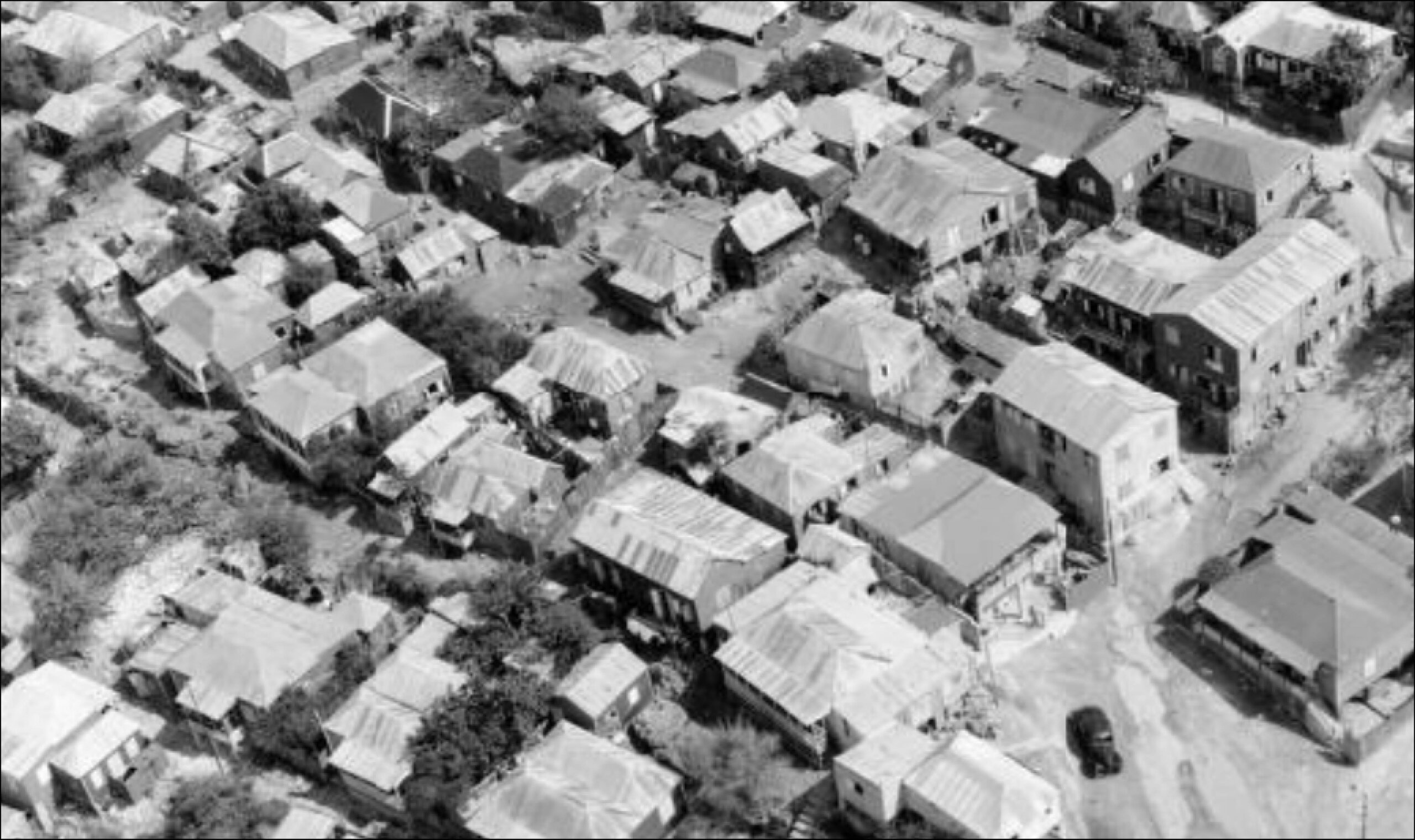We are working on a Masterplan for Fleur de Marie, Curacao. Through research and analysis, we are exploring the spatial and socio-economic possibilities for the future development of the Fleur de Marie district within the historic city center of Willemstad.
About Fleur de Marie
The Fleur de Marie district was once a lively residential area. It was often the first area of interest when new legislation or policies were created with the aim to improve the housing situation on the island. Starting with the automatization of the refinery in the fifties Fleur the Marie underwent a gradual decay. The massive demolition of nearly two thirds the houses in the sixties was devastating for the neighborhood. More recently people start seeing the quality of these self-built neighborhoods. This let to the radical improvement of the infrastructure in 2012. In this same period 11 homes were added. This was the first uprise after decades of decay. These physical transformations went along with a strong social empowerment program under guidance of Unidat di Bario, in the person of Jeannette Juliet Pablo. Unfortunately this program was stopped after 2 years because of lack of funds. This resulted in a stagnation of the positive developments in the area.
The district is often characterized as a low income area, with many outdated homes and an over representation in the crime rates. But if you look beyond these negative aspects you also see a neighborhood with a strong social cohesion and that survived through the decades notwithstanding the desire of many to take it down. We were curious to find out what the (social) qualities are of this neighborhood, because we want to make a masterplan which doesn’t lead to a total gentrification. We specifically want to avoid that the original community loses their sense of belonging.

Socio-cultural research
In all our project we start with brief historical analyzes. But for this project we decided to deepen our research. In preparation for our Masterplan, we therefore asked Stephanie van Heijningen, social-cultural and behavioral researcher, to conduct research into which social aspects are important for the development of this area.
Stephanie has investigated which (heritage) values the neighborhood still possesses and what the socio-historical context is, to determine the character of the neighborhood. She also looked at how we can prevent the negative sides of gentrification when this neighborhood is redeveloped. We take these results into account to preserve the soul of the neighborhood.
Analysis of public and shared spaces
With the results of Stephanie’s research as a bases we started with our spatial analyses. The accessibility of this area leaves much to be desired, especially considering that most residents here have a lower income and are dependent on public transport. The next bus stop and bus station is at 450 meters, which is about a 10-minute walk, and this can be particularly inconvenient, especially in hot weather. The bus stop in Otrobanda is even further away, at 790 meters. This means that everything west of Fleur de Marie is even more difficult to reach.
The existing trees in the area provide residents with valuable shade, with some native trees (Indju trees) that have spiritual significance and that residents would like to see preserved and not demolished. Further analysis is required to assess the quality of the trees present. The analysis also showed a lot of open areas, differing in size from 75m2 to a few thousand square meters. For us it was obvious to bring back and or strengthen the self-build culture. We are still in the process of investigating to what level we want to regulate this. But we are convinced that if their needs to be any regulation, these must be set up together with current tenants of the neighborhood. We want to try to bring back a sense of ownership which will help in the process of self-development.
Besides plots for self-build houses, we are exploring the possibilities for bigger developments on the bigger plots, but always with the character of Fleur de Marie in mind. Soon we will share the masterplan in which we will elaborate on how we worked with the existing qualities to define the concept of our masterplan.








